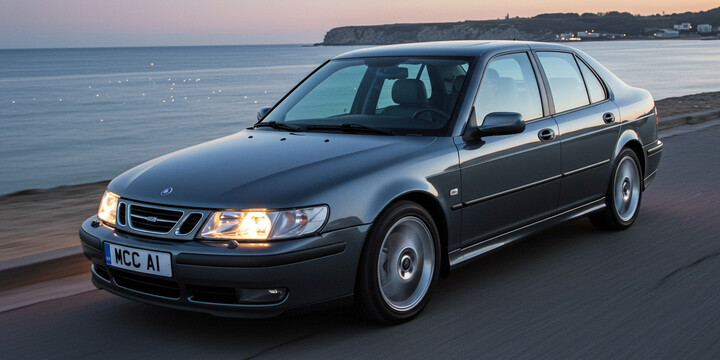
SAAB 9-3 (2002-07) 5DR SPORTWAGON 1.9 TID 150 LINEAR
The SAAB 9-3 (2002-07) 5DR SPORTWAGON 1.9 TID 150 LINEAR is a practical and versatile estate car that appeals to drivers seeking a stylish yet functional vehicle. Designed as a spacious five-door station wagon, it is ideal for families, commuters, or anyone needing extra cargo capacity without sacrificing driving comfort. Known for its sleek design and solid build quality, this model offers a comfortable ride along with good fuel economy, making it suitable for daily use and longer journeys alike.
What sets the SAAB 9-3 SPORTWAGON apart from its rivals is its reputation for reliability and distinctive Scandinavian design, combined with practical features that appeal to a wide range of drivers. Typically used for family outings or daily commutes, the model’s balanced mixture of style, space, and efficiency has made it a popular choice in the used car market. With an average recorded mileage of around 131,747 miles and multiple previous owners, it offers a well-rounded option for those looking for a dependable car that combines sophistication with everyday functionality. Whether you're seeking a car for family adventures or reliable city driving, the SAAB 9-3 SPORTWAGON 1.9 TID 150 LINEAR remains a notable and attractive choice in its class.

average use

The data indicates that the most common recorded mileage for the SAAB 9-3 (2002-07) 5DR SPORTWAGON 1.9 TID 150 LINEAR is between 120,000 and 130,000 miles, accounting for a third of the vehicles (33.3%). Other notable mileage ranges include 150,000 to 160,000 miles (22.2%), with smaller proportions in the 110,000 to 120,000, 140,000 to 150,000, and 90,000 to 100,000 miles categories, each comprising around 11-11.1%. Interestingly, there's a peak focus around the 120,000 to 130,000 mile mark, suggesting it's a common milestone for this model, possibly reflecting typical usage cycles or servicing points. The distribution shows a spread across various mileage stages, with a significant concentration near the higher mileage range of 150,000 to 160,000 miles.

vehicle values

The data indicates that the majority of private sale transactions for the SAAB 9-3 (2002-07) 5DR SPORTWAGON 1.9 TID 150 LINEAR fall within the £0 to £1,000 price range, accounting for approximately 77.8% of sales. Only a small proportion, around 22.2%, are sold between £1,000 and £2,000. This suggests that most of these vehicles tend to be sold at relatively low prices in the private market, which could reflect factors such as age, condition, or market demand.

production years

The data indicates that the majority of the Saab 9-3 (2002-07) 5DR Sportwagon 1.9 TID 150 Linear vehicles were manufactured in 2006, accounting for approximately 66.7% of the sample. A smaller portion was produced in 2007 (22.2%), while only 11.1% date back to 2005. This suggests that the 2006 model year is the most common among these vehicles, possibly reflecting a peak in production or popularity during that year.

colour popularity

The data indicates that among the SAAB 9-3 (2002-07) 5DR SPORTWAGON 1.9 TID 150 LINEAR models, black is the most common paint colour, representing 44.4% of the vehicles. Blue also has a significant presence at 22.2%. The remaining colours—silver, red, and grey—are each used by approximately 11.1% of the vehicles. This suggests a preference for classic, darker tones among owners, with black being particularly popular.

ownership cycle

The data indicates that most 'SAAB 9-3 (2002-07) 5DR SPORTWAGON 1.9 TID 150 LINEAR' vehicles have had either four or five registered keepers, accounting for 55.6% and 33.3% respectively. A smaller proportion, 11.1%, have had nine registered keepers. This suggests that the majority of these vehicles tend to change hands relatively few times, potentially reflecting moderate usage or ownership stability. The presence of some vehicles with nine keepers indicates that a subset has experienced more frequent ownership changes.

engine choices

The data indicates that all SAAB 9-3 (2002-07) 5DR SPORTWAGON 1.9 TID 150 LINEAR vehicles are equipped with a 1910cc engine, and every vehicle in this sample uses diesel as its primary fuel. This uniformity suggests a consistent engine specification and fuel type across the model range during this period.












